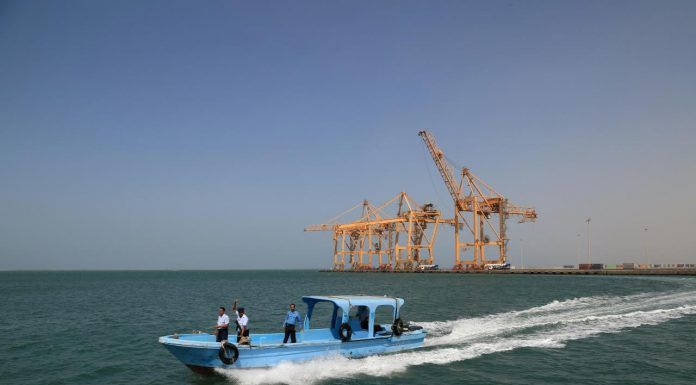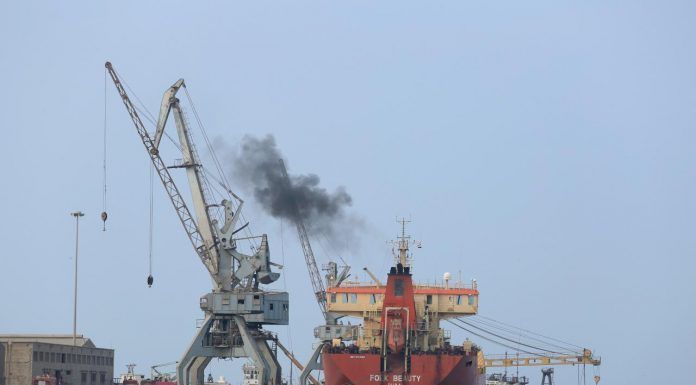By Musa Sharifi
The Red Sea is one of the most vital economic arteries in the world, with nearly 17 percent of all global trades moving through its international waterways. More than 200 million people live in bordering countries — Saudi Arabia, Yemen, Egypt, Sudan, Eritrea, and Djibouti. It connects the Mediterranean Sea to the Indian Ocean, making it one of the most unique and geopolitically significant bodies of water in the world.
The Strait of Bab-el-Mandeb — one of the world’s key waterways, which connects the Red Sea to the Gulf of Aden — is located on the Arabian Peninsula and in the Horn of Africa, between Yemen, Djibouti, and Eritrea. Iran-backed Houthi fighters in Yemen have, on at least two occasions, harassed Saudi oil tankers, highlighting the not-so-secret desire by Tehran to control both the Bab-el-Mandeb in the Red Sea and the Strait of Hormuz in the Persian Gulf. Turkey and Qatar have also been trying to expand their sphere of military and economic influence in the Red Sea through the Suakin Island, in northwestern Sudan.
These regional developments have prompted Saudi Arabia to try to forge military and economic alliances with the countries bordering the Red Sea. Ministers from Saudi Arabia, Sudan, Egypt, Yemen, Djibouti and Somalia (bordering the Gulf of Aden) met in Riyadh earlier this month to form an economic, trade and security coalition. Although the ministers mostly discussed economic, trade and investment opportunities, many experts believe that the main aim of the conference was to strengthen military and security cooperation in the region.
The new regional tensions between Saudi Arabia, Egypt and the United Arab Emirates (UAE), on the one hand, and Turkey, Iran and Qatar on the other, seem to have started after Turkish President Recep Tayyip Erdogan traveled to Sudan and visited Port Sudan and Suakin Island in December 2017. Mr. Erdogan praised the development project initiated by Ankara on Suakin Island, which had an important strategic position during the Ottoman Empire. Saudi Arabia, Egypt and the UAE, however, consider Sukan a stronghold of the Muslim Brotherhood.
Erdogan defused the political tension by highlighting cultural rather than political cooperation between Sudan and Turkey. He said: “Turkey plans to conserve and restore ancient Ottoman ruins that were damaged during British colonial rule. Turkish Muslims will be able to set off on their annual Haj pilgrims from Suakin Island.”
It is clear that regional powers are all focusing their efforts to expand their sphere of influence in the Red Sea. Turkey and Qatar are flexing their economic muscles to gain greater access to the Red Sea through Sukan Island in Sudan. Iran has used Houthi fighters in Yemen to assert its presence in the Strait of Bab-el-Mandeb. Saudi Arabia, Bahrain, Egypt, and the UAE are at odds with Qatar over many political and regional issues. The transfer of the uninhabited and strategically located Tiran and Sanafir Islands to Saudi Arabia by Egypt has also added to the regional tension.
World powers have always fought over the control of the Red Sea. At the end of World War II, the U.S. and the Soviet Union engaged in a long geopolitical, economic and strategic dispute over the waterway. The opening of the Suez Canal in 1869, which connected the Mediterranean to the Red Sea, was a significant development in the region. It created the shortest and quickest route between the East and the West.
The subsequent discovery of oil in the Arab states of the Persian Gulf transformed the Red Sea into a significant strategic waterway for shipping oil to the outside world and also for transporting goods from Europe to major Asian, African, Chinese, Japanese and Indian markets.
Saudi Arabia, Egypt, the UAE, and the U.S. have the most extensive presence in the Red Sea, followed by Russia, Turkey, and Qatar, which have been able to gain access to the waterways through Sudan’s Suakin Island. Israel and Iran have allied themselves indirectly with one or the other group. Iran, however, has been trying to use the Yemeni Houthis to fight the Saudis as well as gain access to the Red Sea through the Strait of Bab-el-Mandeb. By contrast, Israel already has access to the sea and enjoys America’s support.
Translated from Persian by Fardine Hamidi



